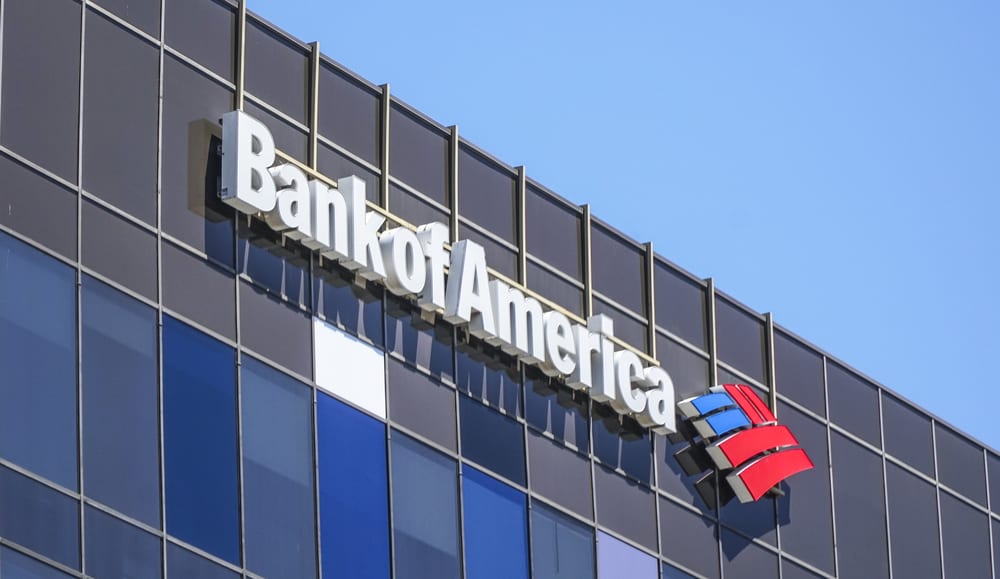Bank of America Faces Network Outage, Leaving Thousands of Customers in Limbo
03.10.2024 16:30 2 min. read Alexander Zdravkov
A major network issue at Bank of America left thousands of customers unable to access their accounts or seeing their balances reduced to zero.
The problems began around 4:26 PM UTC on October 2 and peaked an hour later, with nearly 18,000 reports of issues logged on Downdetector, predominantly related to the bank’s mobile and online services.
Although Bank of America has not publicly commented on the situation, it indicated to CNN that most of the issues had been addressed. By 1:01 AM UTC on October 3, the bank assured Cointelegraph that the technology problems were resolved. However, many customers reported ongoing difficulties, with one user expressing frustration that their issues persisted after hours of waiting.
Customer reactions ranged from anger to humor, with some noting that while their account balances were missing, their debts remained intact. Reports surfaced that branches were not processing transactions, and some ATMs failed to display balances, although cash withdrawals were still possible.
In light of the outages, some cryptocurrency enthusiasts pointed to this incident as a justification for self-custodying funds, highlighting Bitcoin’s reliable uptime record since 2013.
This event also brought to mind a previous disruption in November that delayed wage payments for many Americans due to issues within the Federal Reserve’s Automated Clearing House. Despite the chaos, Bank of America’s stock showed resilience, remaining stable even amid significant sell orders from major investors.
-
1
Binance Could Introduce Golden Visa Option for BNB Investors Inspired by TON
07.07.2025 8:00 1 min. read -
2
Weekly Recap: Key Shifts and Milestones Across the Crypto Ecosystem
06.07.2025 17:00 4 min. read -
3
Trump Imposes 50% Tariff on Brazil: Political Tensions and Censorship at the Center
10.07.2025 7:00 2 min. read -
4
Key Crypto Events to Watch in the Next Months
20.07.2025 22:00 2 min. read -
5
USA Imposes Tariffs on Multiple Countries: How the Crypto Market Could React
08.07.2025 8:30 2 min. read
Robert Kiyosaki Warns: ETFs Aren’t The Real Thing
Renowned author and financial educator Robert Kiyosaki has issued a word of caution to everyday investors relying too heavily on exchange-traded funds (ETFs).
Bitwise CIO: The Four-Year Crypto Cycle is Breaking Down
The classic four-year crypto market cycle—long driven by Bitcoin halvings and boom-bust investor behavior—is losing relevance, according to Bitwise CIO Matt Hougan.
Strategy to Raise Another $2.47 Billion for Bitcoin Acquisition
Strategy the company formerly known as MicroStrategy, has announced the pricing of a new $2.47 billion capital raise through its initial public offering of Variable Rate Series A Perpetual Stretch Preferred Stock (STRC).
AI Becomes Gen Z’s Secret Weapon for Crypto Trading
A new report from MEXC reveals a striking generational shift in crypto trading behavior: Gen Z traders are rapidly embracing AI tools as core components of their strategy.
-
1
Binance Could Introduce Golden Visa Option for BNB Investors Inspired by TON
07.07.2025 8:00 1 min. read -
2
Weekly Recap: Key Shifts and Milestones Across the Crypto Ecosystem
06.07.2025 17:00 4 min. read -
3
Trump Imposes 50% Tariff on Brazil: Political Tensions and Censorship at the Center
10.07.2025 7:00 2 min. read -
4
Key Crypto Events to Watch in the Next Months
20.07.2025 22:00 2 min. read -
5
USA Imposes Tariffs on Multiple Countries: How the Crypto Market Could React
08.07.2025 8:30 2 min. read


